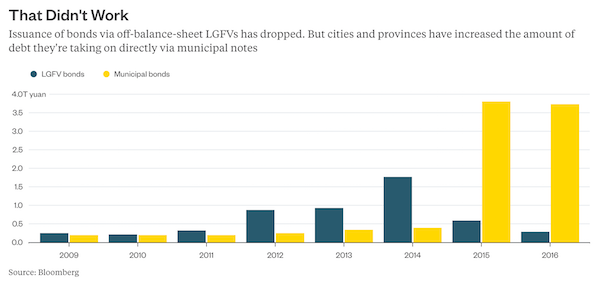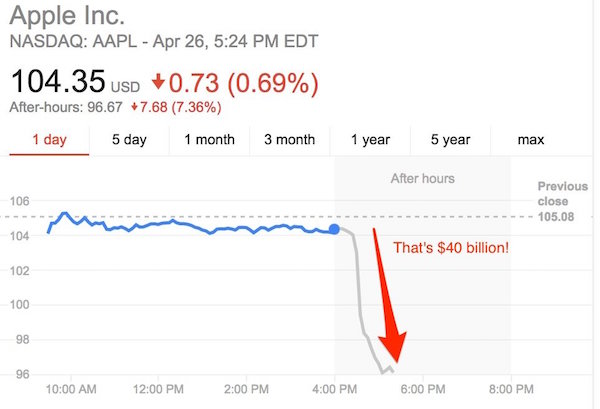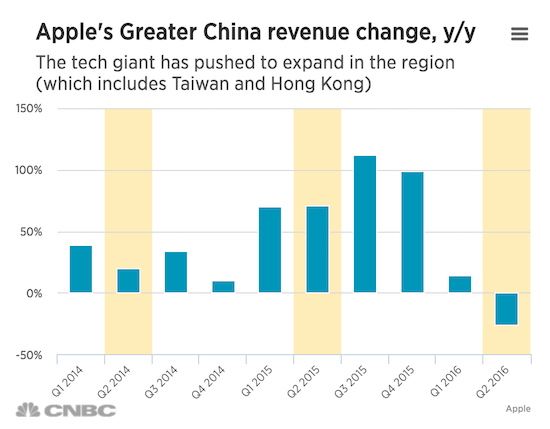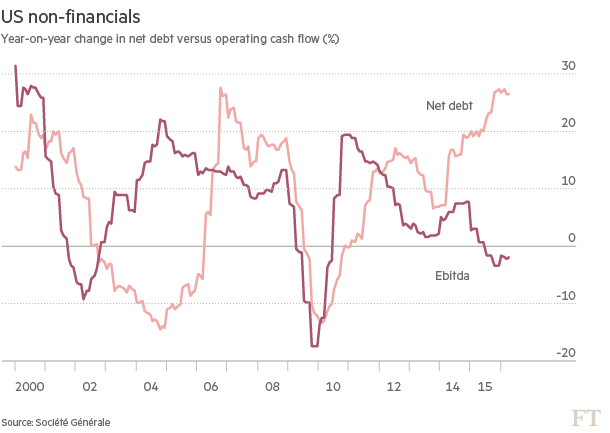
Paul Klee Ghost of a Genius 1922

Greenwald Threat to democracy
What is actually “the single biggest threat to our democracy” is not, as Obama claims, the internet — that’s one of the key safeguards — but rather the attempt to *control* the internet by institutions of authority, including parties, the national security state and their allies: https://t.co/s4vXy90xml
— Glenn Greenwald (@ggreenwald) November 17, 2020

Greenwald press freedom
None of what the press whined about regarding Trump — mean tweets about Chuck Todd and Acosta, etc. — were actual threats to press freedom. Obama's Espionage Act use was way worse.
The one actual Trump-era threat to press freedom: they ignored because he's not in their clique: https://t.co/F7t3lPDUNM
— Glenn Greenwald (@ggreenwald) November 18, 2020

You can’t claim to be listening to “the science” and ignore people like him.
• Expert Says Alberta Politicians “Playing Medicine” (WSO)
A top Edmonton doctor in virology says Albertans “are being led down the garden path” by government health officials in their efforts to stop the COVID-19 virus. Dr. Roger Hodkinson says the virus is no worse than a “bad flu.” Hodkinson is the CEO of Western Medical Assessments, and has been the company’s medical director for over 20 years. He received his general medical degrees from Cambridge University in the U.K., and then became a Royal College certified pathologist in Canada (FRCPC) following a residency in Vancouver. He also taught at the University of Alberta and runs MutantDx, a molecular diagnostics company in North Carolina.
“What I am going to say is lay language and blunt,” Hodkinson said during an Edmonton City Council Community and Public Services Committee meeting, audio of which is currently making the rounds on YouTube. “There is utterly unfounded public hysteria driven by the media and politicians. It’s outrageous. This is the greatest hoax every perpetrated on an unsuspecting public. “There is absolutely nothing to be done to contain this virus other than protecting your more vulnerable people. It should be thought of as nothing more than a bad flu season. “This is not Ebola. It’s not SARS. It’s politics playing medicine. And that’s a very dangerous game.”
“Masks are utterly useless. There is no evidence based on their effectiveness whatsoever. Seeing these people walking around like lemmings obeying without any knowledge…putting the masks on.” Hodkinson said social distancing is also “useless” because the virus can travel up to 30 m before landing. He said positive tests, which do not accurately reflect whether you have the virus, are driving “public hysteria,” adding testing should stop unless you show up at a hospital with respiratory problems. He called for residents of long term care homes to be given daily doses of Vitamin D which can help battle the virus.
Hodkinson said the risk of death from COVID-19 to Albertans under 65 is 1 in 300,000. He also blamed businesses closures for a spate of suicides and other social problems. “It’s just another bad flu, and you have to get your minds around that. You’re being led down the garden path by the chief medical officer of health (Dr. Deena Hinshaw) in this province.,” he said. “I am absolutely outraged that it has reached this level.”
City of Edmonton council meeting

Nor should you ignore these 50,000
Great Barrington Declaration
• 50,000 Doctors And Scientists Sign Global Anti-lockdown Proclamation (JTN)
Six weeks after it was first published, the Great Barrington Declaration — an international pronouncement meant to shine light on what it calls the “damaging physical and mental health impacts of the prevailing COVID-19 policies” — has garnered nearly 700,000 signatures from scientists, academics, doctors and citizens worldwide, with more signatories being added each day as a fresh spate of lockdowns continues across Europe and parts of the United States. Regional and nationwide lockdowns have been an international feature of the COVID-19 pandemic since almost the start of the year. At the outset of the pandemic, China instituted a severe lockdown of the Hubei province where the disease first originated. Global health officials were initially skeptical of the Chinese lockdown, which went against many major established pandemic guidelines.
As the virus spread west into Europe and the United States, however, many heads of state began instituting their own lockdowns, with major countries such as Italy, Spain and the United Kingdom instituting broad stay-at-home orders, business shutdowns, school closures and other unprecedented policies in order to prevent a modeled catastrophic death toll. In the United States, President Trump declined to impose a national lockdown, but throughout March and April governors and local leaders across the country issued their own shutdown orders, some of them lasting for months at a time. The ongoing fall spike of positive COVID-19 tests, meanwhile, has been followed by governors reimposing some of those measures after they were loosened over the summer.
Many public health officials, scientists, epidemiologists and other experts have been broadly supportive of these measures, with many arguing that they are necessary to avoid huge death rates, overwhelmed medical systems and destabilized societies. Yet the Great Barrington Declaration has, in the relatively brief period since its Oct. 4 publication, managed to snag several dozen thousand signatures from experts in those fields and others who believe the lockdowns are causing, in the words of the declaration, “irreparable damage.” “Current lockdown policies are producing devastating effects on short and long-term public health,” the document states. “The results … include lower childhood vaccination rates, worsening cardiovascular disease outcomes, fewer cancer screenings and deteriorating mental health — leading to greater excess mortality in years to come, with the working class and younger members of society carrying the heaviest burden.”
Boris Kotchoubey, a medical psychology professor at the Universiy of Tubingen who has affixed his signature to the proclamation, told Just the News: “I signed the Declaration … because I share the views formulated in it.” “Anti-Corona measures in all countries that I know (mostly, West Europe) are non-directed, imprecise and, therefore, yield more damage than the disease itself,” he said. “Actually, we know more or less where the infection is spread,” he continued. “(1) big events like high level sport events, rock concerts etc.; (2) loud parties; (3) activities in closed rooms, particularly with screams or songs (worship); (4) public transportation, particularly in big cities; (5) last but not least invasion of the infection in retirement homes.
Rodney Sturdivant, another signatory and the director of Baylor University’s Statistical Consulting Center, echoed those criticisms of lockdown policies. Epidemiological research “does not reflect what has been reported and cited as justifying many policy decisions,” he told Just the News. He described the Declaration as “a call to return to public health practice supported by data and science.” “An important public health principle is to not ignore the totality of public health with fixation on a single aspect,” he said. “The consequences of doing so is catastrophic. We are already seeing the impacts: mental health issues, missed cancer treatments, missed immunizations, hunger, drug overdose, domestic abuse, incredible harm to children … the list is tragically long and preventable.”

Come again?! “The study could not rule out that face masks do not provide any protection.”
• Danish Study Finds Face Masks Provide Limited Protection To Wearer (R.)
A Danish study released on Wednesday found face masks provide the wearer with only limited protection against COVID-19 infection, but said this should not be used to argue against their widespread use to prevent people infecting others. In the study, which was carried out in April and May when Danish authorities did not recommend wearing face masks, 6,024 adults were divided into two groups, one wearing face masks and one control group. After one month, 1.8% of the people wearing masks had been infected, while 2.1% of the people in the control group had tested positive, Copenhagen University Hospital said in a press release. “The study does not confirm the expected halving of the risk of infection for people wearing face masks,” it said.
“The results could indicate a more moderate degree of protection of 15-20%, however, the study could not rule out that face masks do not provide any protection.” The findings are consistent with previous research. Health experts have long said a mask provides only limited protection for the person wearing it, but can dramatically reduce the risk to others if the wearer is infected, even when showing no symptoms. Preventing the spread to others is known as source control. The study’s findings “should not be used to conclude that a recommendation for everyone to wear masks in the community would not be effective in reducing SARS-CoV-2 infections, because the trial did not test the role of masks in source control of SARS-CoV-2 infection,” the authors wrote.

“The future of an entire generation is at risk.”
• UNICEF: Schools Are Not ‘Main Drivers’ Of Covid Among Kids (Pol.)
Data from 191 countries shows no consistent link between reopening schools and increased rates of coronavirus infection, UNICEF reported in an analysis Thursday. In releasing its first comprehensive assessment of the pandemic’s effects on children, the United Nations agency said “there is strong evidence that, with basic safety measures in place, the net benefits of keeping schools open outweigh the costs of closing them.” “Schools are not a main driver of community transmission, and children are more likely to get the virus outside of school settings,” UNICEF said.
The numbers: As of November, 572 million students — about 33 percent of all students — are being affected by 30 nationwide school closures, the report found. At their peak, school closures affected almost 90 percent of students around the world. Kids accounted for one in nine reported Covid-19 infections worldwide, the report found. “While children can get sick and can spread the disease, this is just the tip of the pandemic iceberg,” said Henrietta Fore, UNICEF executive director. “Disruptions to key services and soaring poverty rates pose the biggest threat to children. The longer the crisis persists, the deeper its impact on children’s education, health, nutrition and well-being. The future of an entire generation is at risk.”

Impossible patterns.
• Wisconsin, Like MI, GA, PA and VA, Caught Doing the ‘Drop and Roll’ (GP)
We’ve reported on multiple incidents of ‘glitches’ that people observed related to the 2020 Presidential Election. These incidents seem odd and so we sought out and found a data set from the 2020 Presidential election. A group of IT patriots analyzed a data set of election vote data and found millions of votes in the election that were either lost or transferred from President Trump to Joe Biden. We reported this and our post was retweeted by the President. Then in Pennsylvania we identified a strange pattern in vote percentages between President Trump’s Election Day votes and his mail-in votes that was basically impossible and suggested fraud. Then we reported on a pattern from a few select counties in Michigan that were consistent but made no sense other than to indicate fraud.
Dr. Shiva Ayyadurai using his approach identified 138,000 votes transferred from Trump to Biden in his study. Then we used the same analysis used by Dr. Shiva on a data set from Milwaukee and found more votes transferred from President Trump to Biden. This was enough to change the Wisconsin election to President Trump. We then re-performed Dr. Shiva’s work on one Michigan County he reviewed and materially agreed with Dr. Shiva’s result. Next we reported on another unusual pattern in vote reporting in Virginia and Pennsylvania where after large entries were made which provided a lead for Joe Biden late in the election process, nearly all subsequent entries after that period of time had the exact same unusual ratio in Trump to Biden votes.
Then we found the same ‘Drop and Roll’ pattern, which is virtually impossible, in Georgia and Michigan. Tonight we can report we found the same impossible pattern in Wisconsin that we saw in MI, PA, GA and VA. Just like the other states we reviewed, in Wisconsin President Trump was up in the Presidential Election all Election Day and night. When most Americans went to bed the President was way up and they expected another Trump win, but when they woke up in the morning after the election they quickly notices something had happened. We reported the next day what it was. President Trump was ahead all night and then suddenly early in the morning over 100,000 votes were dumped for Biden.

Then once Biden took the lead after data dumps nearly every single entry was at the same ratio of Trump to Biden votes. Again, it is completely INCONCEIVABLE mathematically and statistically that after the switch in the lead to Biden, batches of votes would have exactly the same distribution to both candidates.

“Wayne County MI election board Republicans rescind votes to certify, file affidavits that their families were threatened..”
• Wayne County Election Board Republicans Rescind Votes Certifying Results (JTN)
In an extraordinary turnabout that foreshadows possible legal action, the two GOP members of Wayne County’s election board signed affidavits Wednesday night alleging they were bullied and misled into approving election results in Michigan’s largest metropolis and do not believe the votes should be certified until serious irregularities in Detroit votes are resolved. The statements by Wayne County Board of Canvassers Chairwoman Monica Palmer and fellow GOP member William C. Hartmann rescinding their votes from a day earlier threw into question anew whether Michigan’s presidential vote currently favoring Democrat Joe Biden will be certified. They also signaled a possible legal confrontation ahead. “I voted not to certify, and I still believe this vote should not be certified,” Hartmann said in his affidavits. “Until these questions are addressed, I remain opposed to certification of the Wayne County results.”
Added Palmer in her affidavit: “I rescind my prior vote to certify Wayne County elections.” Both GOP board members said their concerns included discrepancies in nearly three quarters of Detroit’s precinct poll books where ballots are supposed to be matched to qualified voters. “The Wayne County election had serious process flaws which deserve investigation. I continue to ask for information to assure Wayne County voters that these elections were conducted fairly and accurately. Despite repeated requests I have not received the requisite information and believe an additional 10 days of canvas by the State Board of canvassers will help provide the information necessary,” Palmer explained.

But we can’t see it.
• Durham Probe Moving ‘Full Steam Ahead’ After Election Day (Fox)
U.S. Attorney John Durham’s investigation into the origins of the Russia probe remains “full steam ahead,” a source familiar with his progress told Fox News, despite concerns from Republicans and allies of President Trump that the probe has been dormant following Election Day. “Durham remains full steam ahead,” the source familiar with the investigation told Fox News. Another source told Fox News that his investigation “is definitely still happening,” despite radio silence coming from the U.S. attorney from Connecticut. Durham’s investigation has produced one criminal charge so far, against former FBI lawyer Kevin Clinesmith, who was accused of altering an email related to the surveillance of a former Trump campaign aide.
That prosecution, though, did not allege a broader conspiracy within the FBI, and the conduct it involved had largely been laid out in a Justice Department inspector general report from last December. After the Clinesmith charge, Durham’s team went silent. Two sources familiar with the investigation told Fox News over the summer that Durham was not finished with several lines of investigation, which he believed were “critical.” One source told Fox News Durham had been “feeling more pressure to get this done and wrapped up” over the summer, but said that Durham “does not want this to be viewed political,” and would likely “punt it to after the election,” which he ultimately did.

We stopped counting long ago.
• IIF Shocked To Forecast Global Debt Hitting $360 Trillion In Ten Years (ZH)
The latest quarterly report from the IIF which among other things, has the unpleasant task of calculating total global debt (which consists of Household, Non-financial corporates, General government and Financial debt), was published today and it’s a whopper because it shows, in no uncertain terms, a world that is careening toward either the spectacular deflationary supernoava of a debt collapse, or a hyperinflationary explosion that will need to sweep away hundreds of trillions in debt in the next few years.
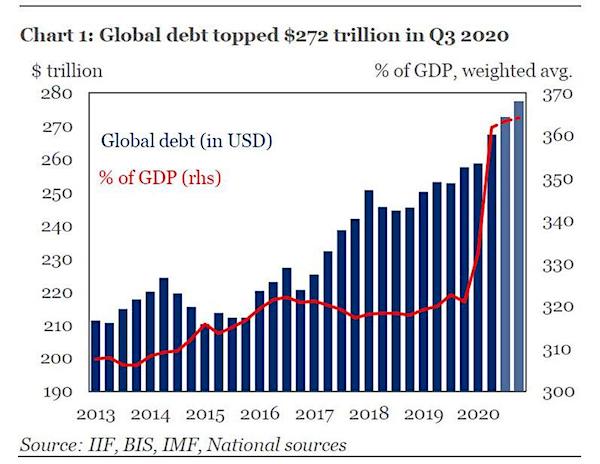
Here are the findings:
• Global debt has surged by over $15 trillion since 2019, hitting a new record of over $272 trillion in Q3 2020.
• As the fiscal response to the pandemic continues, the IIF expects global debt to hit $277 trillion (365% of GDP) by end-2020
• Debt outside the financial sector on track to hit $210 trillion (274% of GDP) this year—up from $194 trillion (240%) in 2019
• Emerging market debt (ex-financials) is fast approaching 210% of GDP—up from 185% in 2019 and 140% a decade ago
• Sharply declining revenues have made debt service much more onerous for EM governments—despite low borrowing costs
• Some $7 trillion of emerging market bonds and syndicated loans come due through end-2021, 15% of that in U.S. dollars
And things get really batshit insane after that, but more on that in a moment. First, here the details: According to IIF calculations, global debt is on track to exceed $277 trillion in 2020: Spurred by a sharp rise in government and corporate borrowing as the COVID-19 pandemic wears on, the global debt load increased by $15 trillion in the first three quarters of 2020 and now stands above $272 trillion. Much if not all of that increase was monetized by central banks who have now activated the disaster contingency plan known as helicopter money. And with little sign of a slowdown in debt issuance, the IIF estimate that global debt will smash through records to hit $277 trillion by the end of the year.
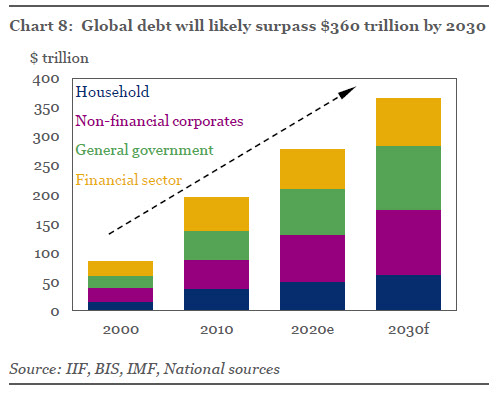

Let’s just cancel it.
• Americans’ Mortgage Debt Soars To A Record $10 Trillion (CNN)
Low interest rates have helped fuel a boom in the US housing market: Last quarter Americans’ mortgage debt climbed to a record high of nearly $10 trillion, the Federal Reserve Bank of New York reported Tuesday. Homebuyers are leveraging the near-constant new lows in rates. At the beginning of this month mortgage rates fell to a record low — the 12th record low in 2020. So it’s no surprise that Americans are out buying houses. Between July and September, mortgage debt increased by $85 billion to a total of $9.86 trillion, a record high, according to the report. Mortgages are the largest contributor to household debt in the United States. The New York Fed’s report was full of records or near-records.
For example, when combining new home loans as well as refinancings, the value of new mortgages was even higher at $1.05 trillion. That’s the second-highest volume on record, rivaled only by the refinancing boom of 2003, according to the report. And though mortgage debt is now much higher than it was during the housing boom ahead of the 2008 financial crisis, it’s notable that the share of borrowers with credit scores above 760 points is far higher than it has been in the past. It’s not just home loans that boomed. A rush to buy cars also propped up auto loans and leases, which climbed to the highest level on record: $1.36 trillion.
Meanwhile, rates of loan delinquencies fell in the third quarter, helped by the forbearance programs created by the CARES Act that allowed for deferral of payments, as well as deferrals offered by lenders. Student loan delinquencies, for example, dropped to 4.4% in the third quarter, down from 9.3% in the second quarter. However, the government’s forbearance programs are due to sunset at year-end, leaving people benefiting from those pandemic policies in limbo. Only 132,000 consumers had a bankruptcy notation on their credit reports between July and September, a new historical low, the NY Fed said.

“They say student debt cancellation is, in that sense, regressive, because it’s a form of economic aid targeted to people who are already at an advantage.”
• Biden Wants To Help Pay Some Student Loans
President-elect Joe Biden has affirmed his support for erasing some student debt “immediately.” Student debt forgiveness was a major campaign plank of some of his more progressive rivals for the Democratic nomination, but it remains controversial even among some Democrats. In answer to a question at a Monday press conference, Biden repeated his support for a provision passed as part of the HEROES Act, which the Democratic-controlled House updated on Oct. 1. The provision calls for the federal government to pay off up to $10,000 in private, nonfederal student loans for “economically distressed” borrowers. Biden specifically highlighted “people … having to make choices between paying their student loan and paying the rent,” and said the debt relief “should be done immediately.”
Senate Democrats are pushing for much more debt relief. Senate Minority Leader Chuck Schumer co-authored a resolution in September with Sen. Elizabeth Warren calling for the next president to cancel up to $50,000 of outstanding federal student loans per borrower. According to data from the College Board, that would mean erasing all debt for more than three-quarters of borrowers. The senators cited an opinion from attorneys at a Harvard legal clinic who argue that the power to cancel federal student loan debt rests with the president and his or her education secretary, since it’s the Education Department that actually originates these loans. That means it can be done regardless of who controls the Senate without passing any new laws. It can be done — but should it be done? Some economists argue canceling student debt will boost the economy, freeing up younger people to start businesses, buy homes and even start families.
Warren, in her presidential campaign proposal, cited arguments that debt forgiveness would reduce the racial wealth gap, reverse rural brain drain and allow more people to complete their educations. Activist groups such as the Debt Collective go further, arguing that student debt is wrong in principle. “We must return education to the status of a public good,” the organization says on its website. Critics point out that people with college degrees usually earn more money than those who don’t have them. They say student debt cancellation is, in that sense, regressive, because it’s a form of economic aid targeted to people who are already at an advantage. Some commentators also see a partisan slant to debt forgiveness. That’s because white voters without a college degree are far more likely to vote Republican. And then there’s the moral hazard argument — that debt cancellation would tempt people to take out more student loans and act irresponsibly in the future.

Bring them home. All of them.
• Bipartisan Resolution to End War in Yemen (Antiwar)
Rep. Peter DeFazio (D-OR) is expected to introduce a resolution in the House on Thursday that calls for an end to US involvement in the war in Yemen. Rep. Andy Biggs (R-AZ) is expected to co-sponsor the legislation, making the bill a bipartisan rebuke to the war, similar to a resolution President Trump vetoed in 2019. In a draft of the bill obtained by Antiwar.com, the legislation invokes the 1973 War Powers Resolution and calls for the president “to remove United States Armed Forces from unauthorized hostilities in the Republic of Yemen.” Since 2015, the US has supported Saudi Arabia and its allies in a war against Yemen’s Houthis. While US troops are not fighting on the ground against the Houthis, the support the US military gives the coalition is covered under the War Powers Resolution.
Section 8(c) of the War Powers Resolution defines the introduction of US Armed Forces to include “the assignment of members of such armed forces to command, coordinate, participate in the movement of, or accompany the regular or irregular military forces of any foreign country or government when such military forces are engaged, or there exists an imminent threat that such forces will become engaged, in hostilities.” The bill says that the “activities that the United States has conducted in support of the Saudi-led coalition fall within” the above definition. US support for the coalition includes things like training, providing spare parts for airplanes, logistical assistance, and intelligence sharing. Experts agree, if the US cuts off support for the coalition, the war in Yemen would quickly come to an end.
While President Trump vetoed previous efforts the end the war in Yemen, including bills banning arms sales to Saudi Arabia, the incoming administration could support the measure. Joe Biden has said that his administration will end support for the Saudi’s war in Yemen.

We try to run the Automatic Earth on donations. Since ad revenue has collapsed, you are now not just a reader, but an integral part of the process that builds this site.
Click at the top of the sidebars for Paypal and Patreon donations. Thank you for your support.

€7 rapid test in Germany
https://twitter.com/stevelizcano/status/1328972463825326080

Support the Automatic Earth in virustime, election time, all the time. Click at the top of the sidebars to donate with Paypal and Patreon.



